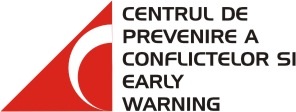As the local elections are coming, the dynamics in the activity of all parties has already changed. The members of Parliament spend more time in their represented districts than in Bucharest (a situation that may seem highly unusual), the campaign managers gather funds and draw up programs and offers, televisions are taken by storm by candidates to the mayor or councilor chairs. More than ever, this is the time for the “human, too human” relations present on the vertical and horizontal line of party organizations to become visible.
“The state party” is still unstructured
In order to underline these relations, the representative case is, of course, that of the Social Democrat Party (PSD). Governing party for a period of two mandates and the most important opposition party from 1996 to 2000, PSD should be, and it is considered so, by the majority of analysts, the best structured Romanian political organization, with efficient relations between its departments and members, both at a central and local level. This representation of the organizatorical force of the governing party is considered to be the sheer truth, a fact that has often intimidated the representatives of other parties. The dimensions of PSD have been therefore oversized, up to the point of assessments that this party is “a state party”. This collocation, which intends to be a negative valuation with an impact on the image of PSD, has in fact the effect of strengthening the impression that the governing party is a true political force. This representation is mostly based on a high ranking of the party in the polls. A party voted by 50% of the citizens has to be a big party.
But PRM also ranks relatively high in the polls, and it is a known fact that its structures are quite weak. Nevertheless, there is a lot of data, until now ignored, which underlines, if not an internal crisis, at least a lack of consistency within the structure levels of the party leaded by Adrian Nastase. PSD is not as much a de-structured party, as it is one yet un-structured. PSD can be a “big” party, but not necessarily through its structures, but more likely due to the number of voters.
Reform means more high positions
Starting with year 2000, PSD has gone through a process of doctrinal clarification. The consequences were its becoming a member of the Socialist International and the consolidation of the party’s position in the political arena. This process was meant to lead at the same time to a clarification of the type of management of the party and of the mode of organization of the party structures. This mission was assumed, as expected, by Adrian Nastase, but there are serious doubts that this mission was accomplished. After two years during which, through dictated directions, the secretary general of the party, Cosmin Guse wished to reform the party, crisis began. Guse’s resignation followed, and in order to rescue the situation, measures were taken. The leading structures, at the local and central level, were enlarged (new positions of vice-presidents, executive secretaries and executive presidents have been created), the party feeling not the need of efficiency, but of leading positions.
An unknown “territory”
There are many elements revealing the weak organization of the party at a local level. Beyond all appearances, the leaders from Bucharest are aware of this fact. The rather often periodical meetings, or the weekly video-conferences, organized with the PSD members of Parliament, with the leaders of the district organizations, with the PSD mayors and with prefects, the scheduled incursions in the territory of the members of the central management (in order to mediate the different conflicts among organizations) show that, at a local level, the party cannot rally and lead, having to receive constantly instructions from the center. This wouldn’t be, though, the worst thing. “Local barons” often perform independently and disregarding the party line, managing the organizations strong-handedly and in a personal manner. This is in fact a reaction towards the autoritarism of the center, but there could also be the case for misunderstandings. The leaders of the local organizations complain about their interests not being promoted in Bucharest, more specifically – the interests of the persons in the territory are not “paired” with those of the persons at the center level. On the other hand, the national leaders consider that their directives are legitimate and that they must be followed. Only they are not followed.
Organizations separated from the party
On the contrary, in many district organizations we are confronted with a phenomenon of “separation” from the center. Practically, these organizations use the name of PSD as an identification mark, and they even use the party’s image at a national level, without having too close connections with the party. Those guilty of this situation are first of all the PSD members of Parliament. Their activity in the territory is insufficient, their connections with their voters are in many cases inexistent, but all of these are known facts. What is not as well known is that they don’t do their job at the party, either, being mostly preoccupied by their personal business, which usually take place in their districts. Their attitude, lacking interest towards their originary local organization and towards the local leaders often causes discontent and the weakening of the organization. There are, nevertheless, situations in which, knowing he won’t have his name on the future election registers, a member of the Parliament enters a coalition with the local organization against the center, a reality that brings about many internal conflicts.
The fight for election registers
But not only the members of Parliament want to be on the registers, but the members of the local organizations also, who want to become mayors, district or local councilors. (The list of positions does not end; it is followed by chairs of directors within the mayoralty, the city council and the local public authorities). According to dispositions coming from the center, the listing should be made with regard to some “performance criteria”, the financial criteria being by far the most important. The first to break these criteria are precisely those from the center, who name candidates directly, by party order, or indirectly, through the authority held in the party and their personal influence. These registers are the object of unpleasant and painful negotiations, as there is a lot of money being thrown in the game and many are willing to go to great length to see their name on the register. Candidates offer to finance the party in change of an eligible place, but they come to depend on the decision of the president of the organization, who may take into account other criteria as well. To be more specific, it is not enough to have the money, you also have to find yourself in the camp of the successful ones. The traffic of influence is blooming these days within PSD. The situations in which all of these do not happen are, probably, rare enough.
Domination through image
From all of the above the conclusion rises that the dominant position held presently by PSD has an occasional character, being based on other grounds than those connected to the organizatorical force and management of the party. This means that PSD’s image, as a party of great force, is nothing more than an image, built not on the real power of PSD, but mostly on the weaknesses of its adversaries. This image is built, at a large length, on the huge image capital of Ion Iliescu, as a consequence of the structure of the electors. Therefore, the fear of the PSD leaders that they could lose the elections is entitled. The “state party” position, not being sustained through anything other than image strategies, can be lost anytime. (Translated by Ramona Cherciu)









